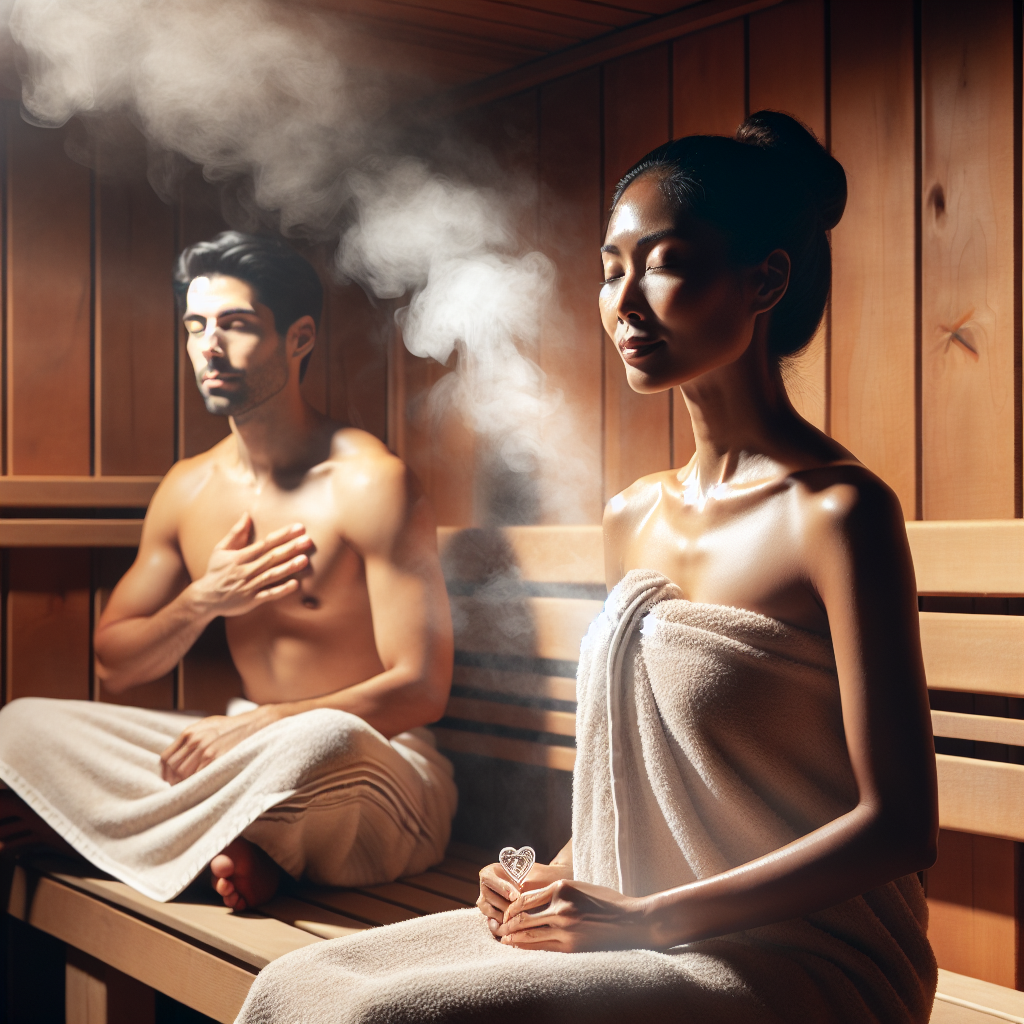In the world of self-care and wellness, sauna use has become increasingly popular as people seek to relax and detoxify their bodies. But amidst the soothing heat and steam, have you ever wondered if there are any specific breathing techniques to enhance your sauna experience? Discovering the right way to breathe in a sauna can not only amplify your relaxation, but also maximize the numerous health benefits. So let’s explore the world of sauna breathing techniques and unlock the secrets to a truly rejuvenating sauna session.

Breathing Techniques for Sauna Use
Saunas have been used for centuries as a way to relax, detoxify, and promote overall well-being. One aspect often overlooked during a sauna session is the importance of proper breathing techniques. In this article, we will explore the basics of breathing in the sauna, how to prepare for a sauna session, what to do during and after the session, the benefits of proper breathing, potential risks and precautions, alternative breathing techniques, breathing exercises to enhance the sauna experience, and some helpful tips for sauna beginners.
Breathing Basics
Breathing is an essential function of our bodies, providing us with much-needed oxygen and removing waste gases. The sauna environment, with its high temperature and humidity, can put additional stress on our respiratory system. Therefore, it is crucial to understand the basics of breathing and how to adapt it to the sauna environment.
Inhale deeply through your nose, allowing the air to fill your abdomen, not just your chest. Exhale slowly through your mouth, releasing any tension or stress with each breath. Practice slow, deep breaths to calm your mind and promote relaxation.
Preparation for a Sauna Session
Before entering a sauna, it is essential to properly prepare your body for the heat and humidity that awaits you. Start by hydrating yourself adequately by drinking plenty of water. Dehydration can occur rapidly in a sauna, so it is crucial to be well-hydrated beforehand.
Additionally, consider taking a cool shower before entering the sauna. This will lower your body temperature slightly, making it easier to adjust to the high heat. It can also help open up your airways and promote easier breathing during the session.
During Sauna Session
Once inside the sauna, it is important to maintain steady and controlled breathing. Focus on taking slow, deep breaths, and avoid hyperventilating or holding your breath. By doing so, you allow fresh oxygen to reach your body’s cells and help eliminate toxins through respiration.
If you find the heat overwhelming, try breathing through a towel or cloth. Wetting the towel in cold water before placing it over your nose and mouth can help cool the air you breathe, making it more comfortable.

After Sauna Session
After your sauna session, take a few moments to relax and allow your body to cool down gradually. Continue to practice slow, deep breaths to help restore your body’s natural rhythm. Take the opportunity to rehydrate by drinking water or herbal tea to replenish the fluids lost through sweating.
It is important to note that after a sauna session, your body will continue to release heat for some time. Give yourself enough time to rest and cool down fully before engaging in any strenuous activities.
Benefits of Proper Breathing in Sauna
Using proper breathing techniques in the sauna has numerous benefits for both your physical and mental well-being. Firstly, controlled breathing helps regulate your heart rate and lowers blood pressure, promoting a sense of relaxation and calmness.
Proper breathing can also enhance the detoxification process during a sauna session. Deep breathing allows fresh oxygen to reach your cells and helps eliminate toxins more efficiently. This can improve your overall respiratory function and boost your immune system.
Additionally, the slow, intentional breaths used in the sauna can help reduce stress and anxiety, promoting mental clarity and focus. This relaxation response can enhance your overall sauna experience, allowing you to fully reap its benefits.
Potential Risks and Precautions
While breathing techniques can be beneficial in the sauna, it is essential to be mindful of potential risks and take necessary precautions. The high humidity and heat in the sauna can be challenging for individuals with respiratory conditions, such as asthma or chronic obstructive pulmonary disease (COPD).
If you have any respiratory conditions, consult with your healthcare provider before using a sauna. They can provide guidance on whether it is safe for you to engage in sauna sessions and may suggest modifications to breathing techniques or session durations.
Alternative Breathing Techniques
Although slow, deep breathing is the most commonly used technique in saunas, there are alternative methods that you can explore. One such technique is the 4-7-8 breathing method, which involves inhaling through your nose for a count of four, holding your breath for a count of seven, and exhaling through your mouth for a count of eight. This technique can help relax your body and promote a deeper sense of calm.
Another alternative is box breathing, where you inhale, hold your breath, exhale, and then hold your breath again, all for the same count of four. Repeat this pattern for several minutes to help clear your mind, reduce stress, and promote relaxation.
Breathing Exercises to Enhance Sauna Experience
To enhance your sauna experience, you can incorporate specific breathing exercises during your session. One technique is diaphragmatic breathing, where you focus on expanding your abdomen as you inhale, allowing your diaphragm to fully engage. Exhale slowly, allowing your abdomen to contract. This deep breathing technique can maximize the intake of fresh oxygen and promote relaxation.
Another exercise is alternate nostril breathing. Close one nostril with your thumb and inhale deeply through the other nostril. Close that nostril with your ring finger, release your thumb, and exhale through the initially closed nostril. Repeat this process, alternating between nostrils. This exercise can help balance the flow of energy in the body and promote a sense of calmness.
Breathing Tips for Sauna Beginners
If you are new to sauna sessions, here are a few tips to keep in mind:
-
Start with shorter sessions: Begin with shorter sauna sessions to allow your body to acclimate to the heat gradually. As you become more comfortable, gradually increase the duration of your sessions.
-
Listen to your body: Pay attention to how your body responds to the heat and adjust your breathing accordingly. If you start feeling lightheaded or uncomfortable, take a break or exit the sauna.
-
Stay hydrated: Drink plenty of water before, during, and after your sauna session to avoid dehydration. Replenish lost fluids to maintain your body’s hydration levels.
-
Practice proper hygiene: Use a towel to sit or lie on, and consider bringing a separate towel to wipe away sweat. This will help maintain cleanliness and prevent the accumulation of bacteria.
Conclusion
Proper breathing techniques can greatly enhance your sauna experience and provide numerous benefits for your physical and mental well-being. By practicing controlled, deep breathing, you can regulate your heart rate, promote relaxation, aid in detoxification, and reduce stress and anxiety. However, it is crucial to be mindful of any respiratory conditions or potential risks associated with the sauna environment. Always consult with your healthcare provider if you have any concerns or questions. So next time you step into a sauna, remember to take a deep breath, relax, and let the healing power of proper breathing work its magic.

